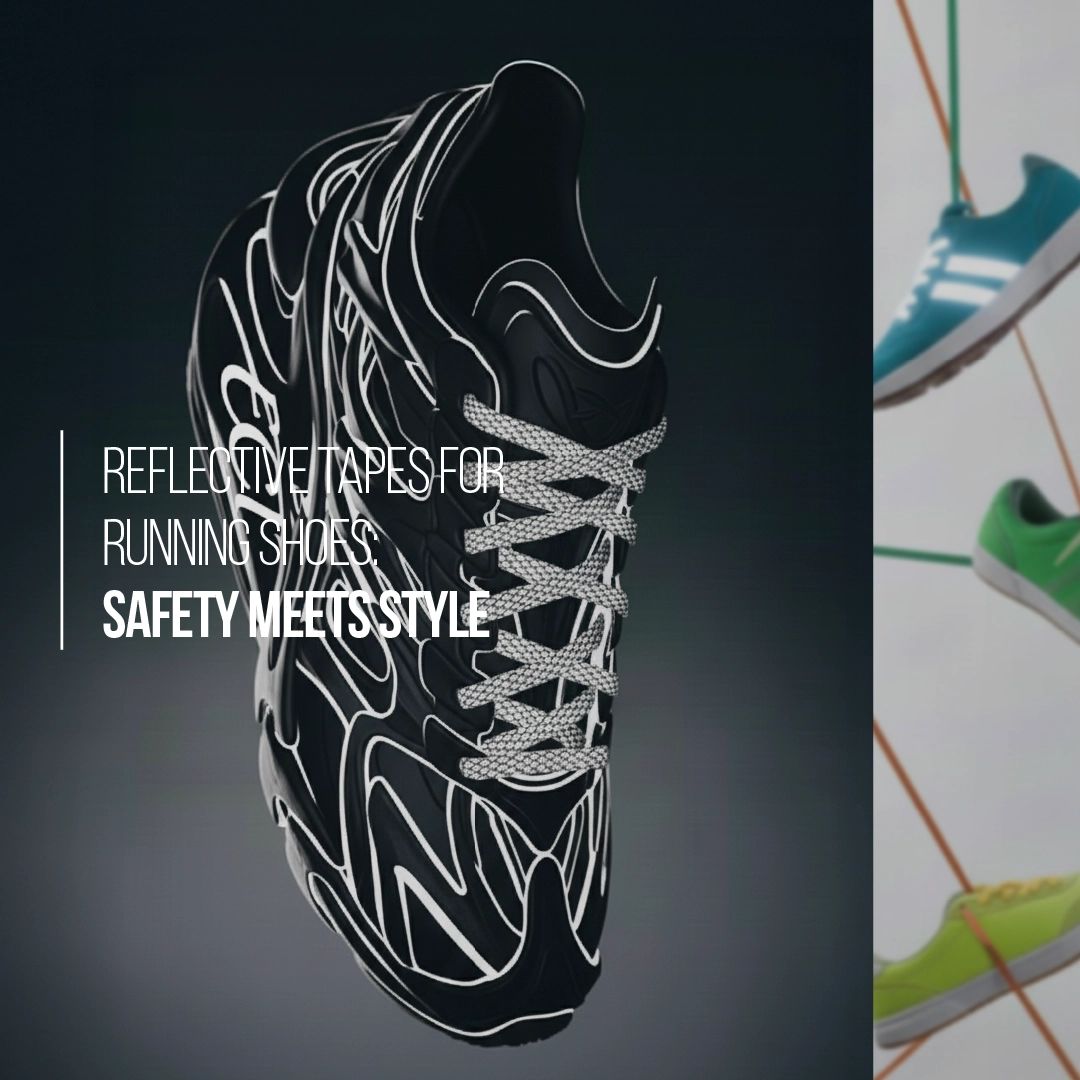Smart Textiles 2030: The Future of Intelligent Fabric Integration
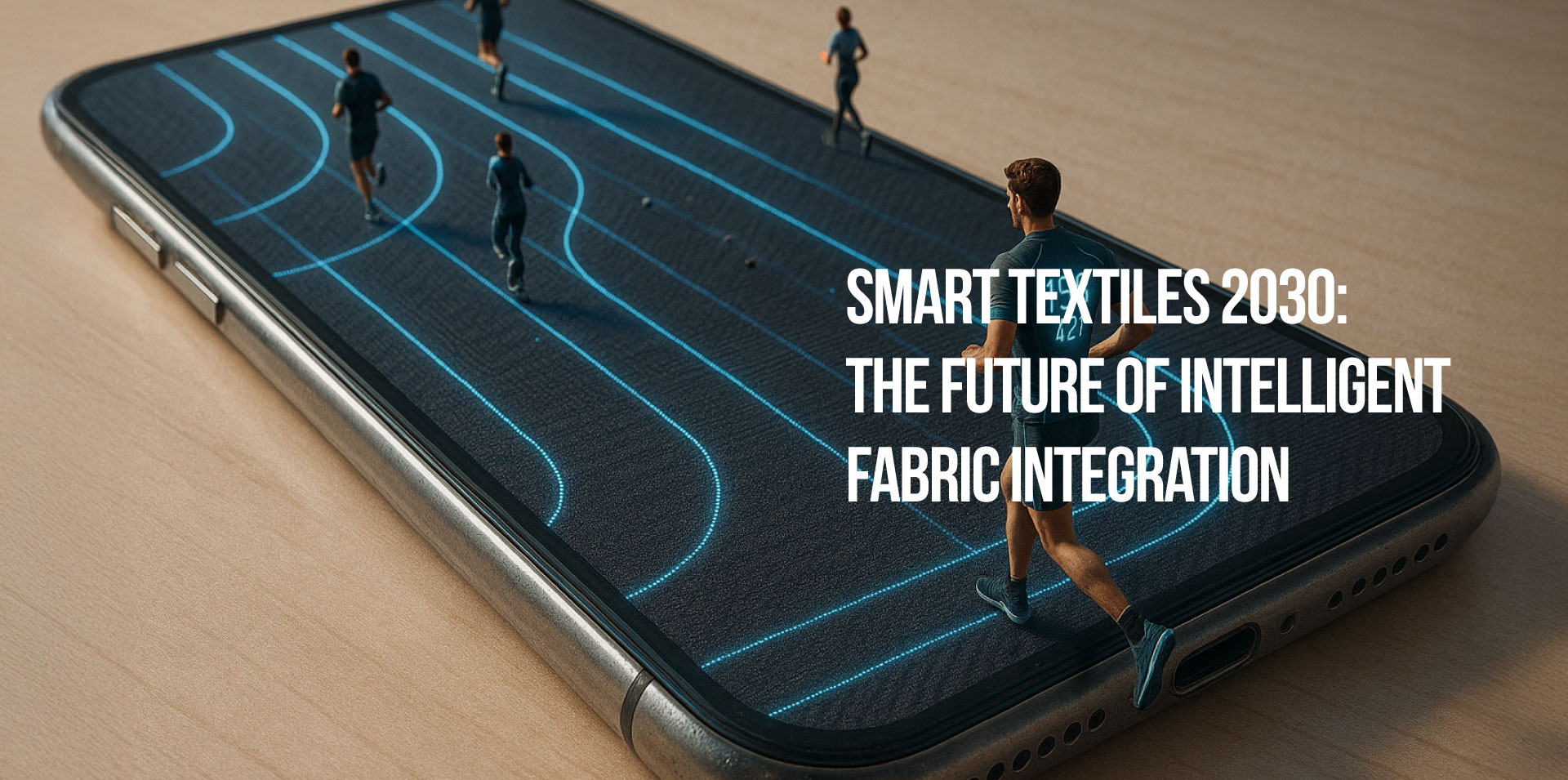
The textile industry stands at the precipice of a revolutionary transformation. By 2030, we envision a world where every garment has the potential to be an intelligent companion, seamlessly integrating technology into the fabric of our daily lives. It's the inevitable evolution of smart textiles, and at ECI we’re positioning our company to lead this democratization of intelligent fabric solutions.
The Current Landscape: Premium Solutions Seeking Mass Adoption
Today's smart textile market showcases remarkable innovations that hint at tomorrow's possibilities. We're seeing yoga apparel that provides real-time posture feedback through embedded sensors and haptic vibration, transforming how people learn and perfect their practice. These garments can actually teach the body, offering precise anatomical guidance that was previously only available through expensive personal training.
In healthcare, we're witnessing the emergence of comprehensive monitoring systems embedded directly into comfortable, washable garments. These solutions track cardiac rhythms, respiratory patterns, activity levels, and sleep quality with clinical-grade precision. What once required bulky medical equipment can now be seamlessly integrated into everyday clothing, opening new frontiers in remote patient monitoring and preventive healthcare.
Athletic performance wear has evolved to include electromyography integration, allowing athletes to visualize muscle activation patterns and optimize their training regimens. This technology provides unprecedented insights into movement quality, muscle recruitment, and training effectiveness—data that was previously accessible only in specialized laboratory settings.
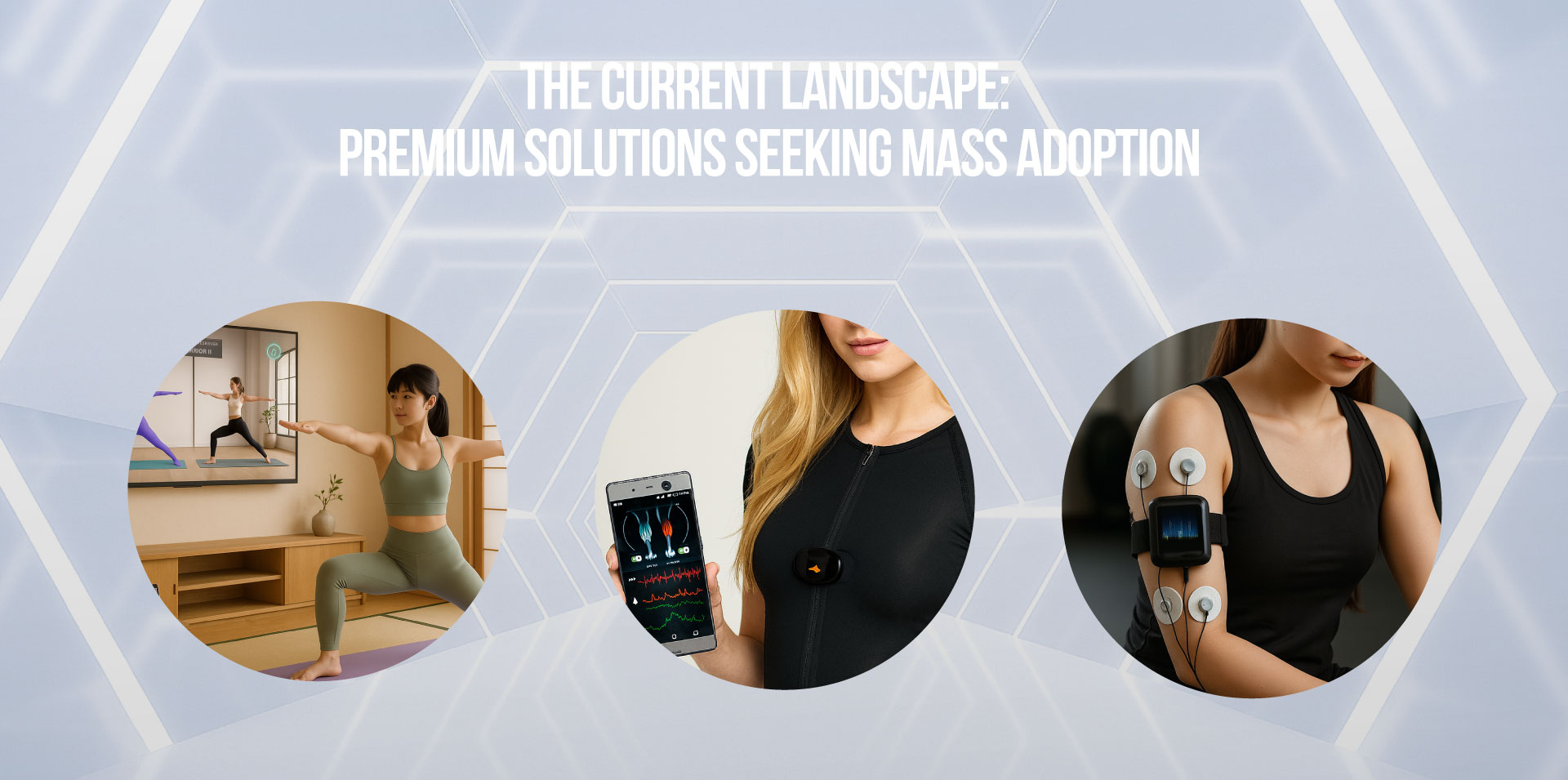
The 2030 Vision: Intelligent Textiles for Everyone
By 2030, these premium technologies will undergo mass democratization. The key lies in sophisticated integration techniques that combine multiple approaches—printed electronics, laminated sensors, flexible circuits, conductive yarns, and smart textile substrates—all working in harmony to create affordable, durable, and highly functional smart garments.
Healthcare Revolution Through Fabric
The healthcare implications are profound. Imagine elderly care facilities where every resident's nightwear continuously monitors vital signs, sleep quality, and movement patterns, alerting caregivers to potential health issues before they become critical. These same technologies, refined from current infant monitoring solutions, will extend healthy aging by providing continuous, non-invasive health surveillance.
Chronic disease management will be transformed through intelligent clothing that tracks medication adherence, monitors symptom patterns, and provides real-time feedback to both patients and healthcare providers. The fabric becomes an extension of the healthcare system itself, creating a seamless bridge between clinical care and daily life.
Fitness and Wellness Integration
The fitness industry will see a complete paradigm shift as smart textiles become the norm rather than the exception. Every workout garment will provide detailed biomechanical feedback, helping users optimize their form, prevent injuries, and track progress with unprecedented precision. The democratization of professional-grade movement analysis will make elite-level training insights accessible to recreational athletes worldwide.
Beyond structured exercise, everyday clothing will encourage healthier habits through subtle haptic feedback, posture correction, and activity prompts. The line between athletic wear and daily clothing will blur as all garments become wellness enablers.
Accessibility and Inclusion
Smart textiles will play a crucial role in creating more inclusive environments. Haptic feedback systems integrated into clothing will provide navigation assistance for visually impaired individuals, while sensor arrays will help those with mobility challenges optimize their movement patterns and prevent falls.
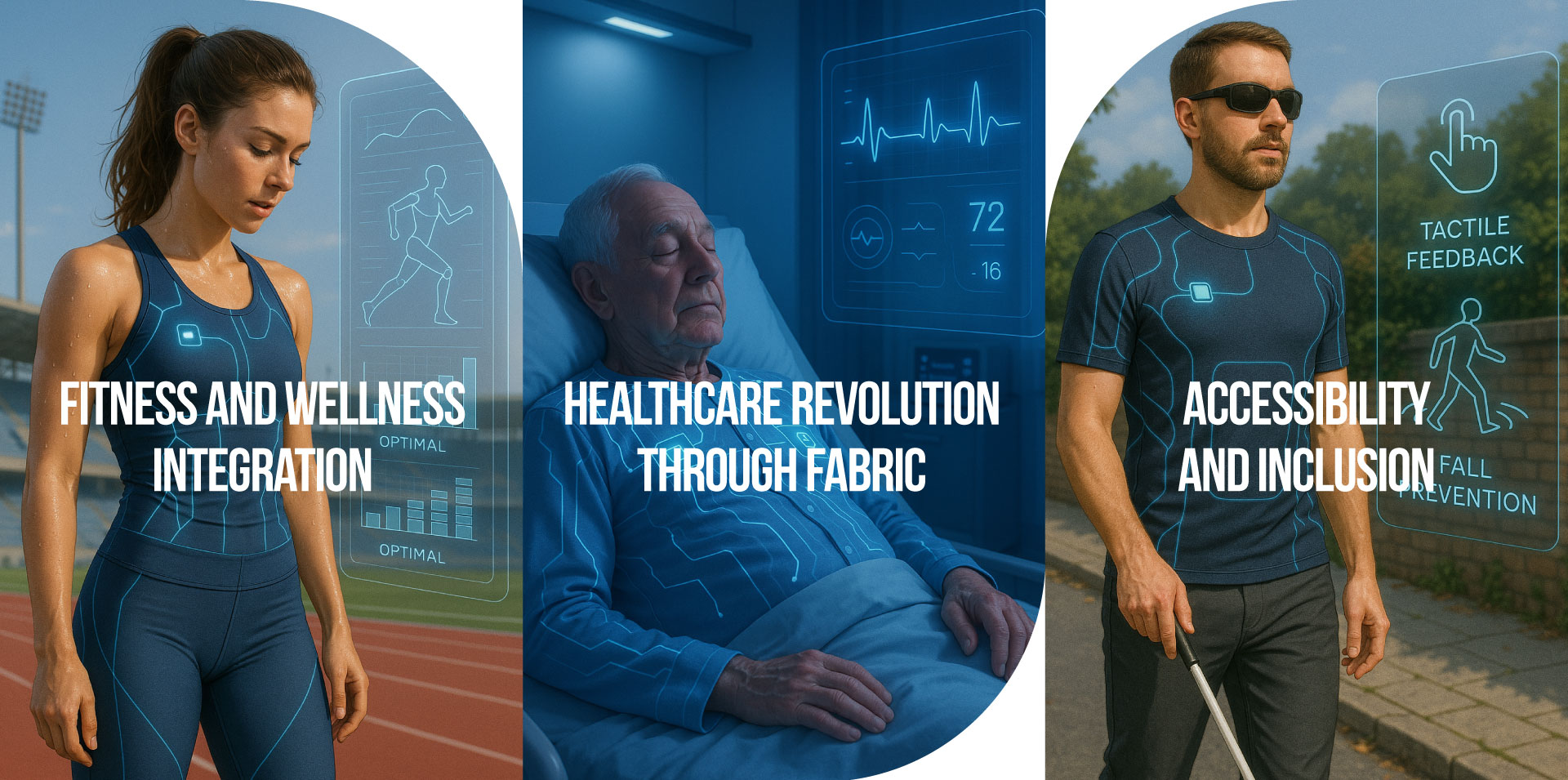
The Integration Challenge: Technology Meets Textiles
The success of smart textiles depends on solving complex integration challenges. No single solution fits every application—each requires careful consideration of sensor types, power management, data processing, connectivity requirements, and user experience design.
The most successful implementations will combine multiple integration techniques within a single garment. Key approaches include spinning yarns with embedded sensor filaments, using conductive threads for seamless connectivity, and leveraging narrow fabric solutions like smart waistbands, sensor-embedded FOE, and conductive piping systems. Advanced techniques such as printed electronics, laminated sensor arrays, and modular integration systems enable hybrid approaches that maximize functionality while maintaining comfort.
The key lies in strategic placement of different technologies—using narrow fabrics for critical sensor areas while maintaining the bulk fabric's comfort and appearance.
ECI's Strategic Position in the Smart Textile Revolution
With 51 years of expertise in custom narrow fabric solutions, ECI brings unique strengths to the smart textile revolution. The company's fully vertically integrated facility provides the flexibility needed to accommodate the complex manufacturing requirements of intelligent textiles, while strong supplier relationships ensure access to cutting-edge materials and components.
ECI's robust R&D capabilities position the company as an ideal integration partner for sensor manufacturers and technology developers. Rather than competing with established electronics companies, ECI can serve as the bridge between innovative sensor technologies and practical textile applications, solving the "last mile" challenge of bringing smart textiles to market.
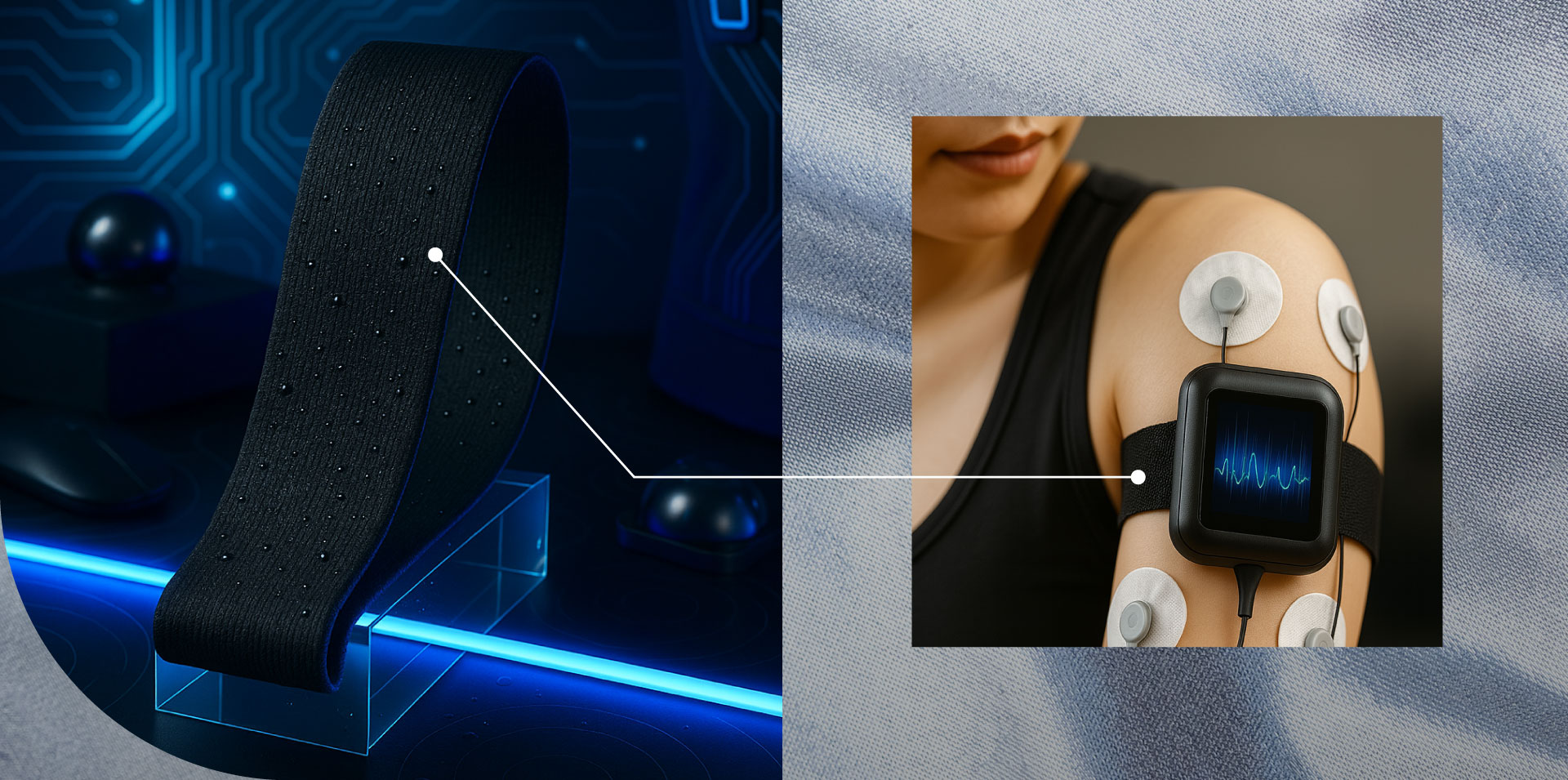
The Democratization Imperative
The true measure of smart textile success won't be in creating the most expensive, feature-rich garments, but in making intelligent clothing accessible to everyone. This democratization requires several key developments:
- Cost Reduction Through Scale: Mass production techniques will drive down the cost of integrated sensors and electronics, making smart features affordable for everyday clothing.
- Simplification of Integration: Standardized integration methods will reduce manufacturing complexity and enable smaller brands to incorporate smart features into their products.
- Durability and Maintenance: Smart textiles must withstand regular washing, wearing, and environmental stress while maintaining their functionality over extended periods.
- User Experience Design: The technology must be invisible to the user, providing benefits without complexity or inconvenience.
The Fabric of Tomorrow
By 2030, the distinction between "smart" and "regular" textiles will begin to disappear. Intelligence will be woven into the very foundation of fabric manufacturing, creating garments that adapt to their environment, respond to user needs, and contribute to broader health and wellness ecosystems.
This transformation represents more than technological advancement—it's a fundamental reimagining of the relationship between our clothing and our lives. As integration partners, solution developers, and manufacturing innovators work together, we're not just creating smarter textiles; we're weaving technology into the fabric of human experience.
The future of smart textiles isn't just about what our clothes can do—it's about how they can make us healthier, more capable, and more connected to the world around us. By 2030, this vision will be within everyone's reach, transforming smart textiles from luxury innovation to everyday necessity.
The journey toward intelligent textiles requires collaboration between traditional textile manufacturers, technology innovators, and integration specialists. Companies positioned at this intersection, with deep textile expertise and strong technological partnerships, will define the next decade of wearable innovation.
